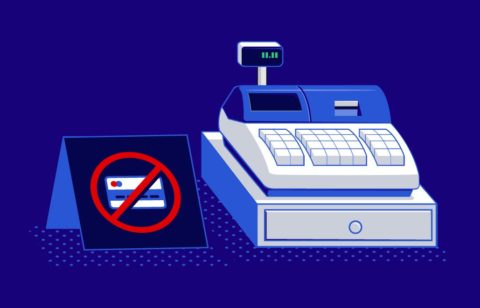According to experts, there is no one-size-fits-all approach regarding how many credit cards you should carry. That number will depend on your unique lifestyle and spending habits. For example, you may have credit cards that offer airline miles if you travel regularly, or you may open a card with a store you shop at frequently.
On average, Americans carry four credit cards with an average credit limit of $30,365. Perks like reward points, airline miles, and cash back can make it tempting to open a new account. But before you give in, ask yourself if you can manage to pay off one more card.
People Also Read
Managing multiple cards
The task of managing multiple credit cards is certainly not as simple as managing just one. However, there are several strategies that can make it easier and less stressful. If you have a billfold full of credit cards, here are eight tips for handling them.
1. Don’t carry a balance
First, you should avoid carrying a balance on your credit cards. Rewards cards are popular, but also tend to have higher interest rates. Carrying a monthly balance can make the interest you pay offset or even negate the value of the rewards you earn by using them.
2. Pay on time
In addition to paying off your balances every month, be sure to make your monthly payments before the balance is due. The easiest way to do this is with automatic, online bill paying. If you miss a payment due date, this could drop your credit score by as many as 60 points. When this happens, you can try contacting the credit card provider and politely ask if they can remove the late payment from your report. Depending on the reason for it, they may agree to accommodate your request.
3. Avoid cards with annual fees
Cards that charge an annual fee can negate any rewards you earn by using them. If you already have one, put a sticker on the front with the amount of the fee and the date it will be charged to your account. This will serve as a reminder to call the card issuer about a month before the payment is due and ask to have it waived. If the company declines, close the account. Then look for a new credit card that best serves your needs without charging a fee.
4. The right card for the right purchase
The toughest part of managing multiple credit cards is maximizing your rewards points. Mobile apps like AwardWallet, MaxRewards, and Mint can help you by keeping track of the cards that offer the best rewards for each of your purchases. You should also pay attention to the features of each one, which could include benefits like extended warranties, fraud protection, or travel insurance. These can come in handy and save you money when you’re making a major purchase.
5. Keep track of your purchases
It’s difficult to pay off your balance each month if you don’t know where the money is going. If you stop paying attention to your spending, things can quickly spiral out of control. Carefully review each credit card’s paper statement or use a program such as Quicken to monitor your credit card activity. Many credit cards have purchase requirements. Tracking things carefully can help ensure you have the right number of transactions, or you spent the right amount of money to gain the maximum in bonuses.
6. Be aware of your credit score
It’s important to understand the effect that having multiple credit cards can have on your credit score. For example, 15% of your score is based on the length of your credit history or how long you’ve had credit. If you find you’re not using a credit card and close the account, this will temporarily drop your credit score. Applying for a new credit card also nicks your score, so don’t be tempted every time a new reward is introduced.
7. Resist temptation
Some credit cards lure you with rewards points, cash back, free travel, and other perks. However, this may not be a good idea if you lack financial discipline. You might get a credit card with the best of intentions, but you could put your financial health at risk if your spending gets out of hand. Excessive spending and missed payments can result in fees and high interest you didn’t expect to pay. The net/net: trying to juggle multiple credit cards is not for you if you’re disorganized or can’t resist impulse purchases.
8. Try the “snowballing method”
In the event your spending spirals out of control and you find yourself struggling with high balances on all your cards, you could pay them off by “snowballing” those credit card debts. First, create a spreadsheet and list all your credit cards, their balances, interest rates, and due dates. Next, sort them from the one with the highest balance down to the one with the lowest.
Do everything you can to pay off the card with the highest interest rate first while making the minimum payments on the other cards. When you’ve paid off that first card, you will have the maximum amount of money available to begin paying off the card with the second highest interest rate. Keep doing this and you could be debt free in two to three years, depending on how much you owe.
Overcoming Credit Card Debt
You can have too many credit cards. If you find they are putting you deeper into debt, we can help you reduce or pay off the balances for less than you owe—and in a shorter amount of time. You will also receive tips and advice on healthy spending habits so that credit cards don’t get the best of you ever again.







